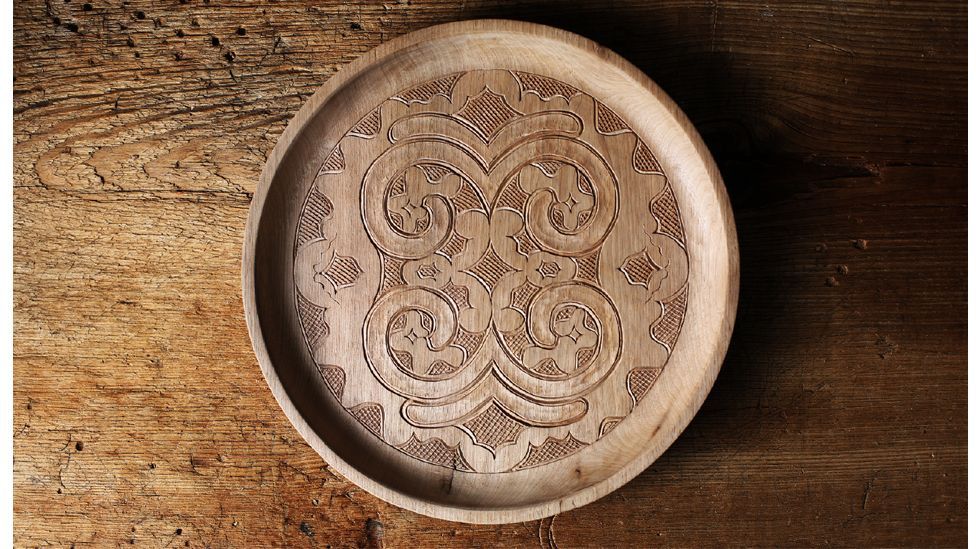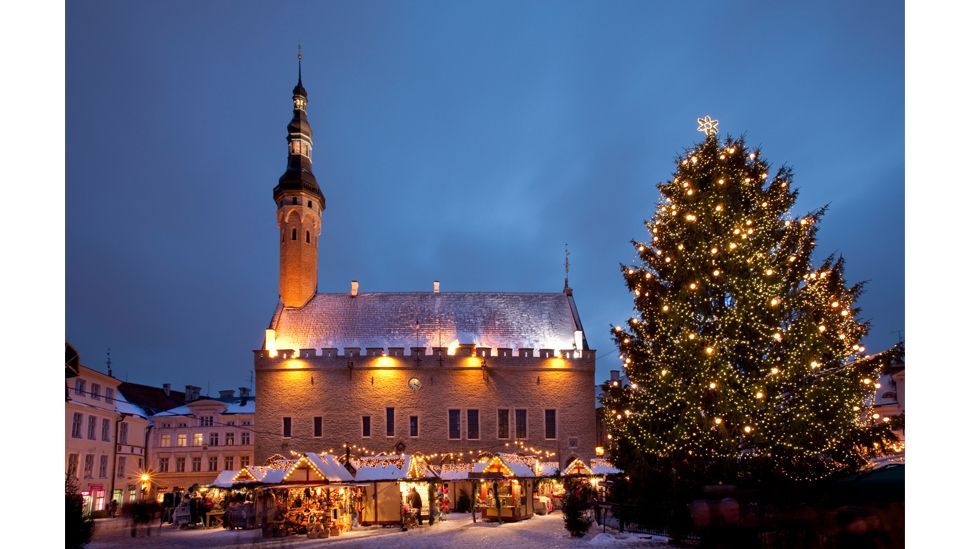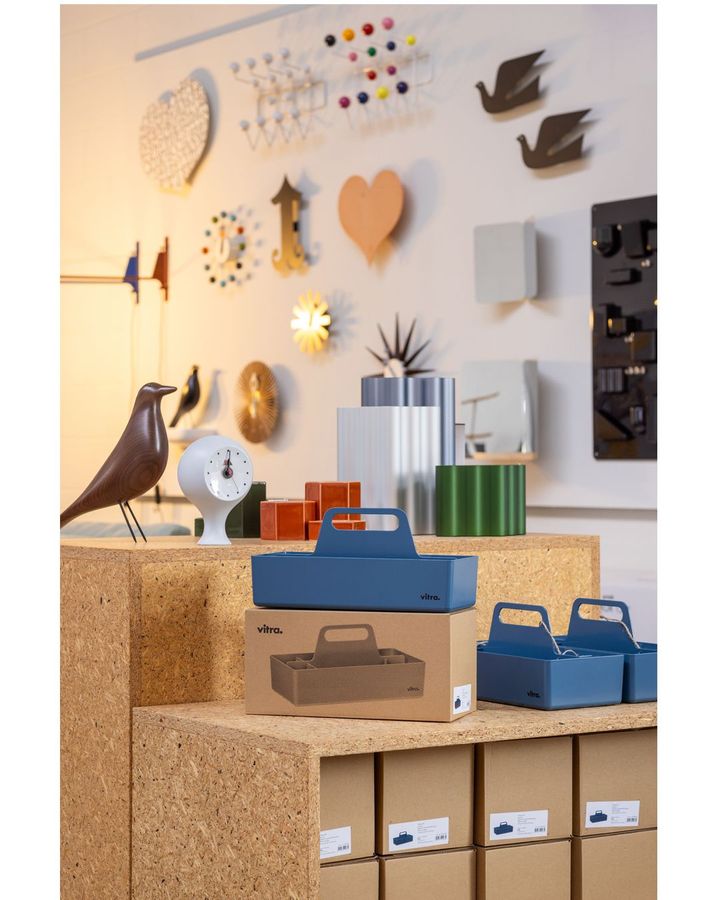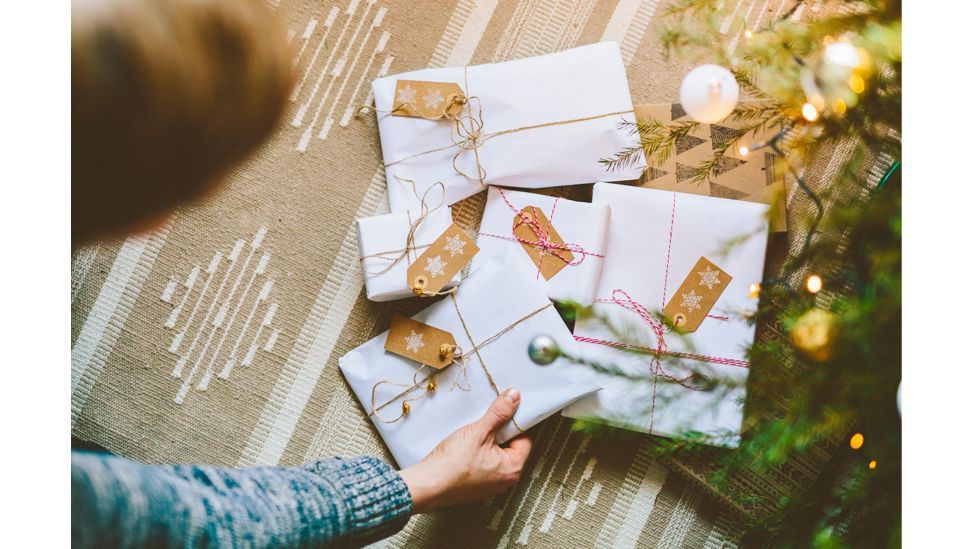A guide to giving gifts sustainably

Gift-giving these days can be a fraught experience. Questions compete for attention: where was it made? What’s it made of? What about the producer’s working conditions?
Clare Brass, a specialist in the circular economy, is pretty blunt about tangible gifts. She’s always believed that there is no such thing as a sustainable product. “Whatever you buy has an environmental – and often social – impact. So even if you choose the ‘most environmentally-friendly’ gift, you’re not really helping the planet.”
More like this:
– How to avoid buying new clothes
– The people living low-waste lives
– The 300-year-old method of upcycling
Brass suggests that circular products are better. The principles around the circular economy mean that if you closely follow the instructions of what to do with a gift at the end of its life, all the materials embodied in it should be able to be upcycled into new materials to make another item of the same type and quality, rather than being “down-cycle”, and ending up as loft insulation, for example. That also means none of it should end up in landfill. Because the more that’s reused and recycled, the less that’s mined and manufactured.

Ita trays by Ainu woodcarvers, Japan – craftspeople benefit directly when gifts are purchased from specialist ethical retailers (Credit: Nibutani Craft Cooperative Association)
Brass reckons that Rapanui “do a very good line in fantastic quality circular T-shirts”, and smartphone manufacturer Fairphone “is an amazing and genuinely circular piece of technology”. Made from recycled materials, these robust phones come with a five-year warranty, as keeping your phone for five years cuts CO2 emissions by 31%, according to the company. For any tech geek always chasing the latest gadget, this could be a game-changer.
If it’s got to be tangible, Brass is in favour of edible gifts, “especially if they come direct from a regenerative farmer”. We all have to eat, after all, so food and drink is a necessity rather than a superfluous luxury. She cites Crowdfarming.com. “You can order a huge variety of fruits and vegetables directly from farmers in Europe who are striving to produce in a soil-positive way.” There’s nothing like festive cake to bring people together, from German stollen to Romanian cozonac, Italian panettone and English mince pies – washed down, why not, with warming spiced drinks like mulled wine and gluhwein.
For gardening enthusiasts, a specialist tool, like a long-handled trowel, will gets lots of use. The planet and the insects might benefit more from flower bulbs or herb and veg seeds. All of the above will encourage the recipient to spend even more time in nature, boosting their wellbeing. To this end, the friends I share an allotment with in south London will get a bag of Climate Compost inoculum. This special compost mix made by The Land Gardeners in Oxfordshire, UK, is full of naturally occurring soil microbes. Adding a pinch of it to the soil should create stronger, healthier, more resilient plants. That means the present can help us grow our own veg – sort of sustainable self-gifting.
Sustainable gift platforms
It’s not just the product and what it will be used for, it’s also about how it was made and who made it. Buying direct from makers based near you obviously helps cuts down on air miles, especially if they make with local materials. And shopping like that also supports small local businesses. Another allotment holder makes and sells scarves and socks from textiles she has dyed herself from plants she’s grown.
Again, a well-targeted product that’s actually used and not binned is the present to strive for. A festive market can be a great hub for multiple purchases – and the antidote to London’s Oxford Street on Christmas Eve. Finnish-Canadian author Katja Pantzar can be found at Helsinki Christmas Market on Senate Square, stocking up on a very particular and well-targeted present. Pantzar is one of the growing army of cold-water evangelists. Her next book is titled The Power of Hot and Cold. From Sauna to Sea: The Finnish Way to a Happy, Healthy Life. How do you warm up after a dip in the Gulf of Finland? By protecting your extremities. “I go to the Helsinki Christmas Market to stock up on hand-knitted woollen hats and mittens for my swimming friends,” Pantzar tells BBC Culture. Markets like the one in the Finnish capital are a great hub, bringing together dozens of local artisans in one place. They’re everywhere now, from Australia’s Makers and Shakers markets, to State Street in Chicago.
Meet the makers
Gift-givers can also hunt down individual makers who are local to them. In Japan, that might mean a traditional carved wooden tray or ita from Ainu woodcarvers in the Nibutani district. Or a vase from Omet in Austin Texas, where everything is handmade in Mexico from locally-sourced materials, and all the designers are from South America. Meanwhile, Made In DC has a handful of shops around Washington DC selling more than 5,000 crafts and gifts (from apothecary, clothes and art, to furniture jewellery, home decor and stationery) by 200 local makers.

Christmas markets often feature independent artisans offering hand-crafted gifts (Credit: Getty Images)
Getting something second time around adds to its sustainable credentials. And if the item is fancy enough, it comes with the cachét of a collectible. The Chelsea showroom of High Style Deco in New York City houses Art Deco and mid-century furniture, lighting, accessories and jewellery. How about a four-piece, hand-rubbed, walnut, brass and black enamel fire tool set, made in the US in the 1960s? An Indiana vintage store Pegboard Modern has some mid-century walnut salad servers from the Swedish company Söwe Konst.

Some gift retailers offer second-hand versions of their own items that have been repaired on-site (Credit: Circle Stores)
In Europe, Swiss furniture brand Vitra and its sister company Artek from Finland have opened Circle Stores in Brussels, Amsterdam and Weil am Rhein, Switzerland. These stock second-hand versions of their own items which have been repaired on-site. And Ateliers Verts is a luxury sustainability shopping portal that stocks products based on a complex algorithm that includes materials, ethics of manufacturing, distribution and packaging.
Then there’s the wrapping paper, much of which can’t be recycled because it’s shiny. Better to keep paper from past presents and reuse it – that’s easier to do if it has been secured with hoarded ribbon or string rather than sticky tape. Or go for a vintage fish-and-chip look, with newspaper pages or brown paper found scrunched up as padding in those deliver boxes. Anyone with a sewing basket might have off-cuts of pretty fabric to use as wrapping.
But, as enthusiastic anti-consumerist Simone Faby points out, many of us are drowning in stuff, whatever its provenance. “So many presents end up unused in cupboards, and in bins a couple of years later. They’re often bought in a rush, last minute or because they’re a good deal. They’re often meaningless or with no thought for the recipient.” For her, the marketing machine around festive holidays and the pressure to give presents “takes away the pleasure of just being together”. She particularly loathes the Christmas shopping rush in the UK. “People with endless lists running around in a panic… this is the time of year I don’t shop at all.”
Top tips for sustainable gifting
- If the gift is a product, check its “circular” credentials
- Look out for edible products made locally
- Buy direct from makers based near you or the recipient
- Second-hand suits all pockets and tastes
- Membership of a local arts venue is a great gift
Brass points out that “services are obviously a good way of avoiding products”. And they don’t have to be wrapped. This approach is favoured by Faby, whose twin boys have received few tangible presents from her over the years. “Children nowadays receive presents all year round: at birthday parties (even when they’re the guests), and friends and family always bring them something – it becomes meaningless for them. I’ve seen so many kids opening presents and hardly looking at them before throwing them on the floor.” Instead, she got her boys experiences: theatre tickets, falconry days, a pottery class.
Time spent learning to throw clay or watching a bird of prey land on your arm could be an unforgettable experience – the sort of gift that memories are made of. For sustainable reasons, experiential presents are best if they happen near the recipient. So my daughter got to hang out with the owls at nearby Leeds Castle in Kent one year, while Pantzar’s Helsinki friends might get a voucher for a sauna and a dip in the sea at Villa Furuvik. But Faby’s anti-consumerist approach backfired at one point. When her boys were 10 years old, they begged for “real” presents like their friends got, that they could unwrap. Now they’re grown up, they’ve come round to her approach.
An experiential present that helps a local arts venue ticks an extra box for me. It’s a great way of supporting a probably underfunded but much-loved endeavour. A membership of London’s not-for-profit Lexi Cinema is a gift that also gives back to charity. And I’ll be giving some south Londoners vouchers for Brockwell Community Greenhouses – a walled community garden in Lambeth’s Brockwell Park that does lots of good work, and also puts on events like wreath-making workshops, gigs and supper parties with home-grown food.

Gift-wrapping needn’t be eco-unfriendly – paper and fabric remnants can be used to create festive-looking packages (Credit: Alamy)
Other local friends will get tickets for the Cinema Museum near London’s Elephant & Castle. Based in a former Victorian workhouse that was once home to a young Charlie Chaplin, the volunteer-run venue is an antidote to the modern multiplex. It’s full of cinematic memorabilia, and screens lesser-known classics and curios, like the 1945 horror film, Dead of Night – a treat to look forward to in February 2024. A friend in Paris will get membership to Maison Gainsbourg, the newly opened home of French singer-songwriter, actor, composer and director Serge Gainsbourg. It has been kept intact by Charlotte Gainsbourg since her father’s death in 1991.
Once you start hunting around, the number of fabulous, quirky, or fabulously quirky below-the-radar venues in need of support means the gift-giver is likely to be spoilt for choice. Then it’s just a matter of making sure this sustainable gift fits the recipient.
If you liked this story, sign up for the weekly bbc.com features newsletter, called The Essential List. A handpicked selection of stories from BBC Future, Culture, Worklife and Travel, delivered to your inbox every Friday.
Sign up to the Future Earth newsletter to get essential climate news and hopeful developments in your inbox every Tuesday from Carl Nasman. This email is currently available to non-UK readers. In the UK? Sign up for newsletters here.








